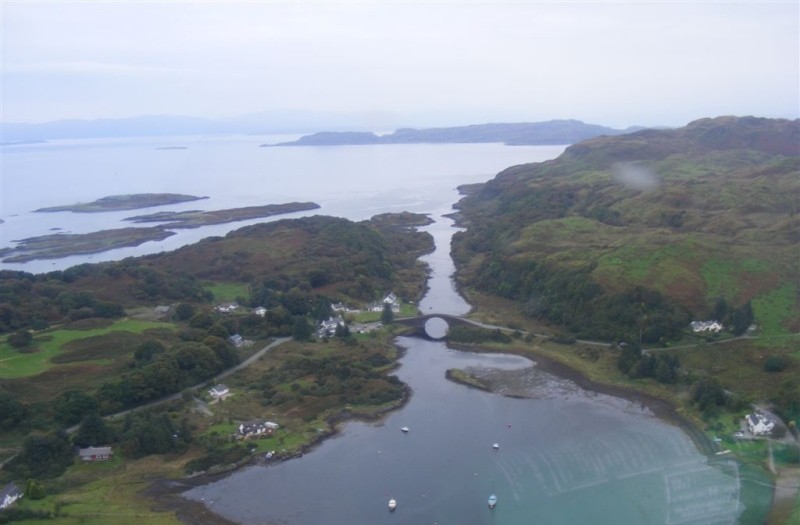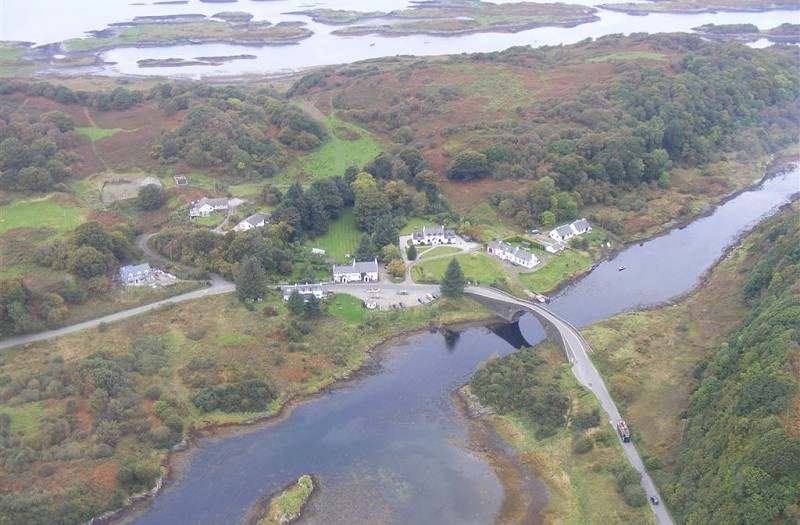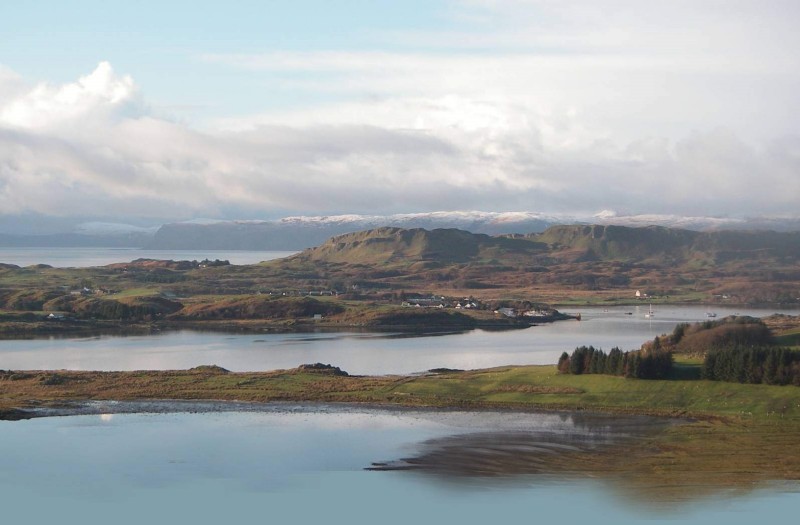Seil is the the most Northerly of the Slate Islands, situated off the coast of Argyll a few miles South of Oban. It is connected to the mainland by road across a beautiful old single-arched bridge dating from 1792 and known as ‘The Bridge over the Atlantic’. The island and the neighbouring islands of Easdale and Luing were at the centre of an important slate quarrying enterprise from the eighteenth century until the early twentieth century. They were known as the ‘Islands That Roofed The World’, and many fascinating relics of these times can be seen.
Seil is washed by the gulf stream and enjoys a mild climate, evidenced by the richness of the foliage and flowers. It is a haven for wildlife, from the sea mammals around the shores to a huge variety of bird life. Once away from the roads the interior of this four mile by two mile island feels much bigger and more remote than you first thought.
The island is home to a population of around five hundred souls. Some work the land or fish, some are employed in the local shops and hostelries or run small businesses. Many people commute into Oban to work, but there are also a fair number of retired people living on the island. It is a vibrant and welcoming community, offering a rich holiday experience to the discerning visitor.
There are four principal settlements on the island. As you come over the bridge you enter Clachan Seil, a rambling settlement on the picturesque shore of Clachan Sound. A mile or so down the road Balvicar, geographically at the centre of the island, still has rows of the old quarry workers cottages and a thriving fishing industry, and is the home of the well-stocked island shop, Balvicar Stores. Turning right at the Balvicar Crossroads we cross the spine of the island to arrive at Atlantic Bay Cottage. A little further down the road lies the pretty conservation village of Ellenabeich, with views across to Mull and Easdale Island. The fourth settlement is North Cuan, situated on the Southern tip of Seil. It is the ferry terminus for the five minute crossing to the Isle of Luing.



